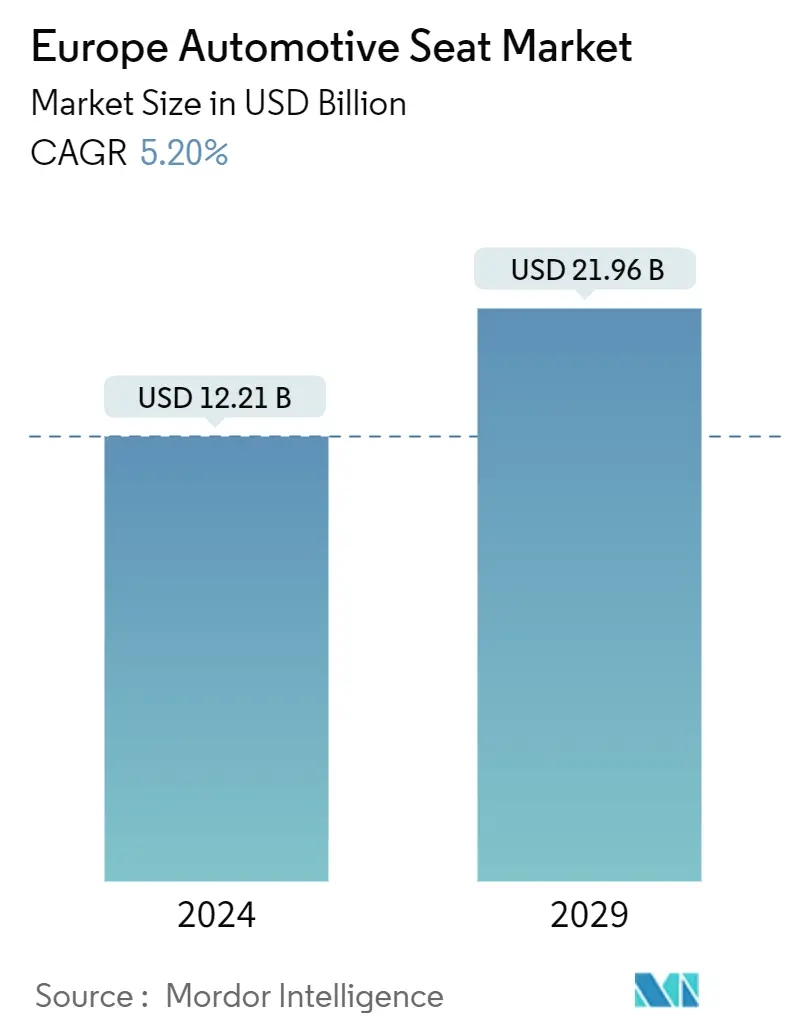Market Size of Europe Automotive Seat Industry

| Study Period | 2019 - 2029 |
| Base Year For Estimation | 2023 |
| Market Size (2024) | USD 12.21 Billion |
| Market Size (2029) | USD 21.96 Billion |
| CAGR (2024 - 2029) | 5.20 % |
| Market Concentration | High |
Major Players
*Disclaimer: Major Players sorted in no particular order |
Need a report that reflects how COVID-19 has impacted this market and its growth?
Europe Automotive Seat Market Analysis
The Europe Automotive Seat Market size is estimated at USD 12.21 billion in 2024, and is expected to reach USD 21.96 billion by 2029, growing at a CAGR of 5.20% during the forecast period (2024-2029).
Over the long term, the rising vehicle sales are expected to boost automotive seat production to meet the increasing demand. Increasing passenger comfort has become one of the most important considerations in the passenger car market, and seats are significant in this aspect.
Consumer demand for safety and comfort in automobiles is a vital factor driving the changes in the manufacturing of automotive seats. Luxurious, comfortable, and safe automotive seating systems are gaining preference among consumers, which, in turn, is prompting OEMs to seek automotive seats that could satisfy consumer expectations. Further, growing concerns about the use of plastic and plastic disposal are causing automotive seat manufacturers to invest heavily in the research and development of new materials for manufacturing automotive seats.
The powered seat and ventilated seat segments are expected to record a high growth rate because of the rising sales of luxury vehicles and the increasing adoption of such seats in mid-segment cars. Ventilated seats help in temperature regulation, which helps in reducing energy emissions through air conditioners, sunroofs, etc. Increased awareness about the intelligent seating solutions offered by manufacturers has enhanced the perceived quality. For instance,
In January 2023, Fauresia SE introduced automotive seat design and manufacturing, which will help to reduce the number of components used in a standard seat from around 120 to 10 modules. The modules are easily assembled and disassembled, allowing the seat's components (such as the cover and cushions) to be replaced and new functions (such as massages, lumbar support, and so on) to be added over time.
Over the years, the demand for lightweight seats has been rising. With concerns about fuel efficiency, the seats are focused on cutting down weight to aid the performance of vehicles. Additionally, sustainability is gradually becoming a key factor influencing consumer decisions. This pervasive trend is estimated to boost the demand for lightweight automotive seats to produce fuel-efficient and high-performance vehicles.
